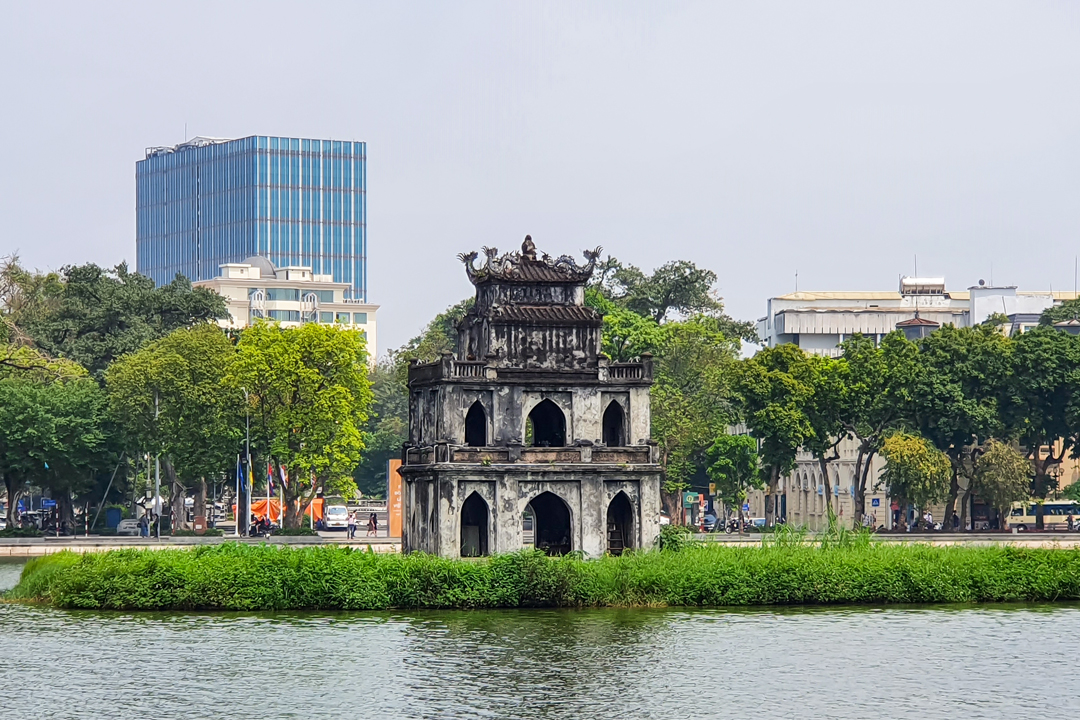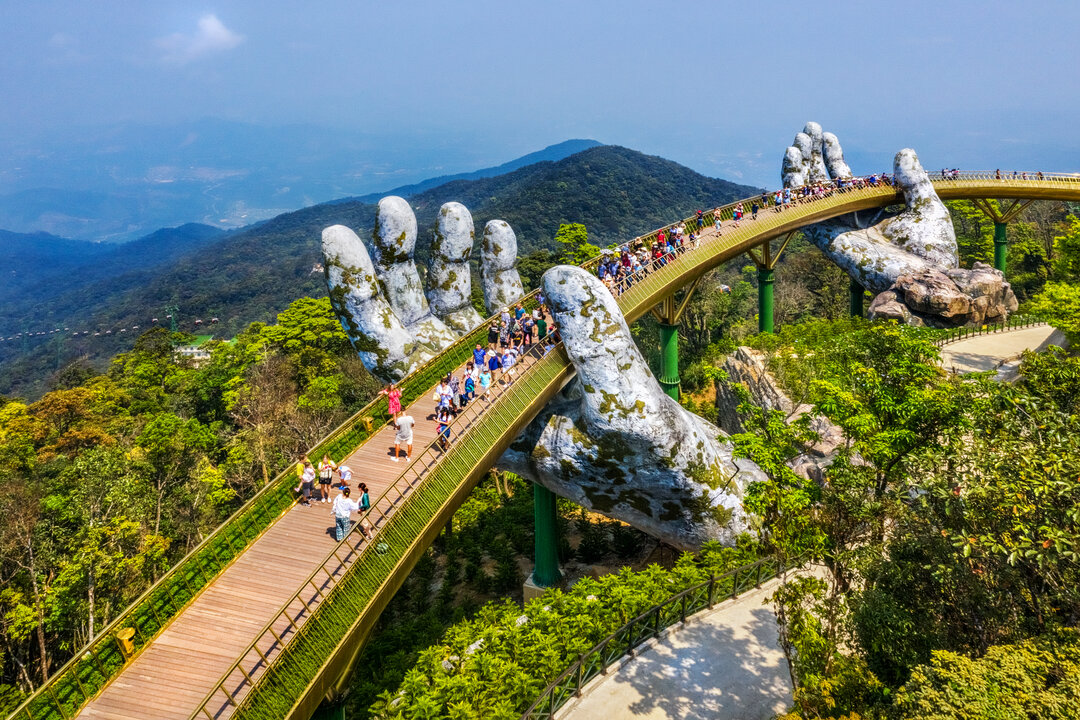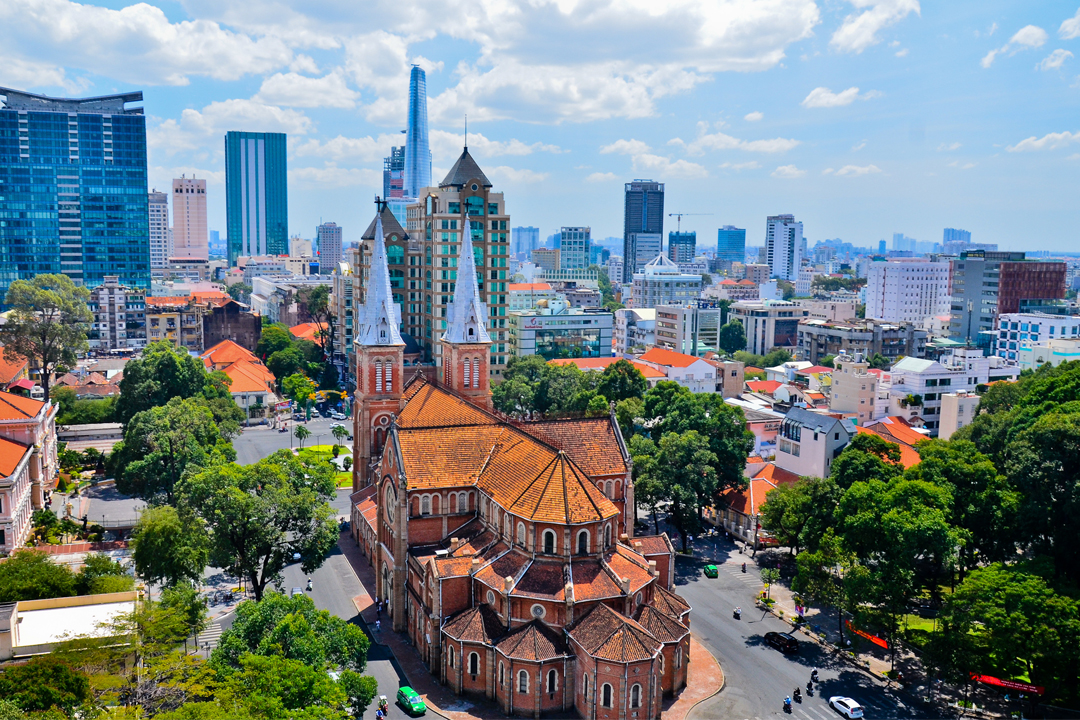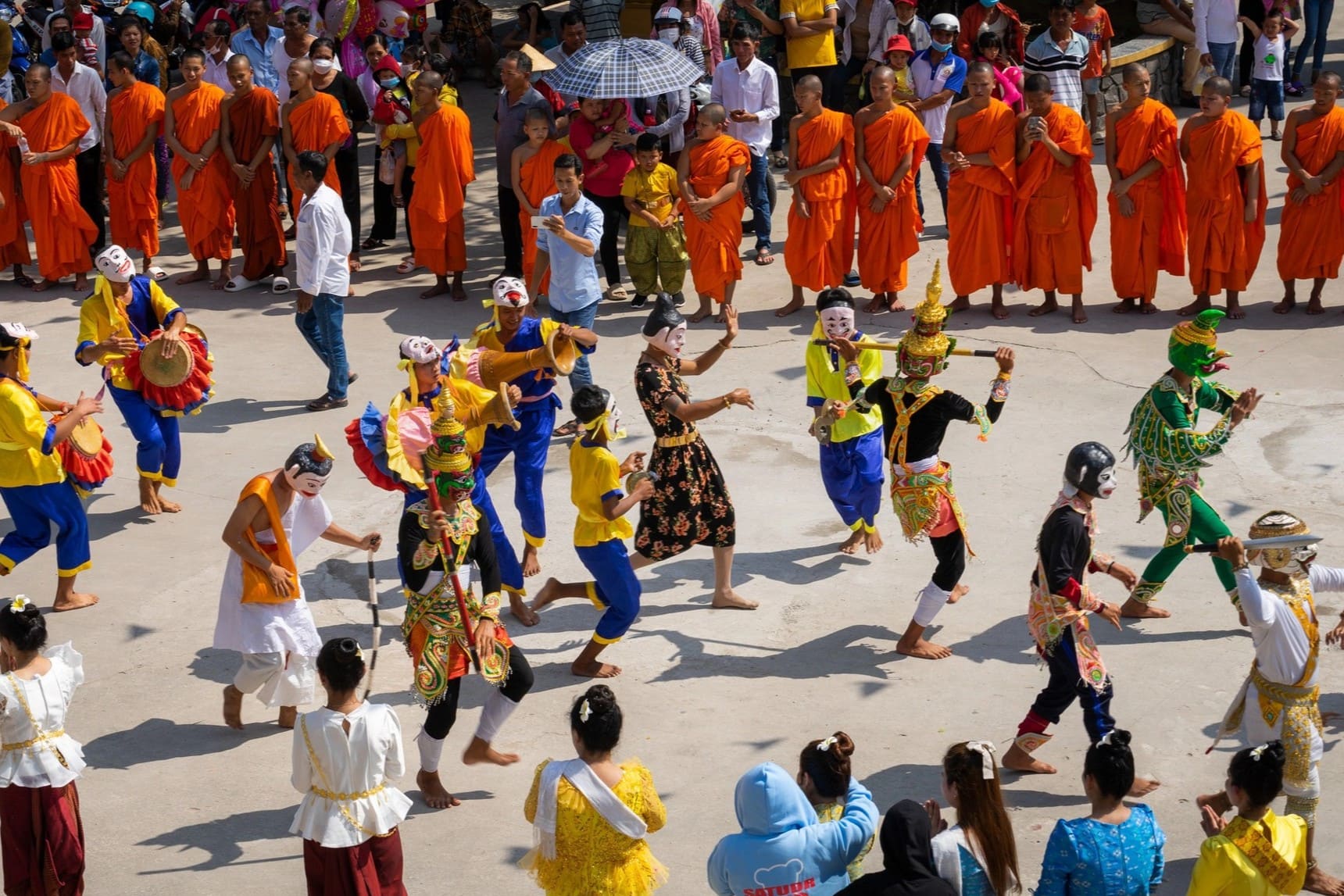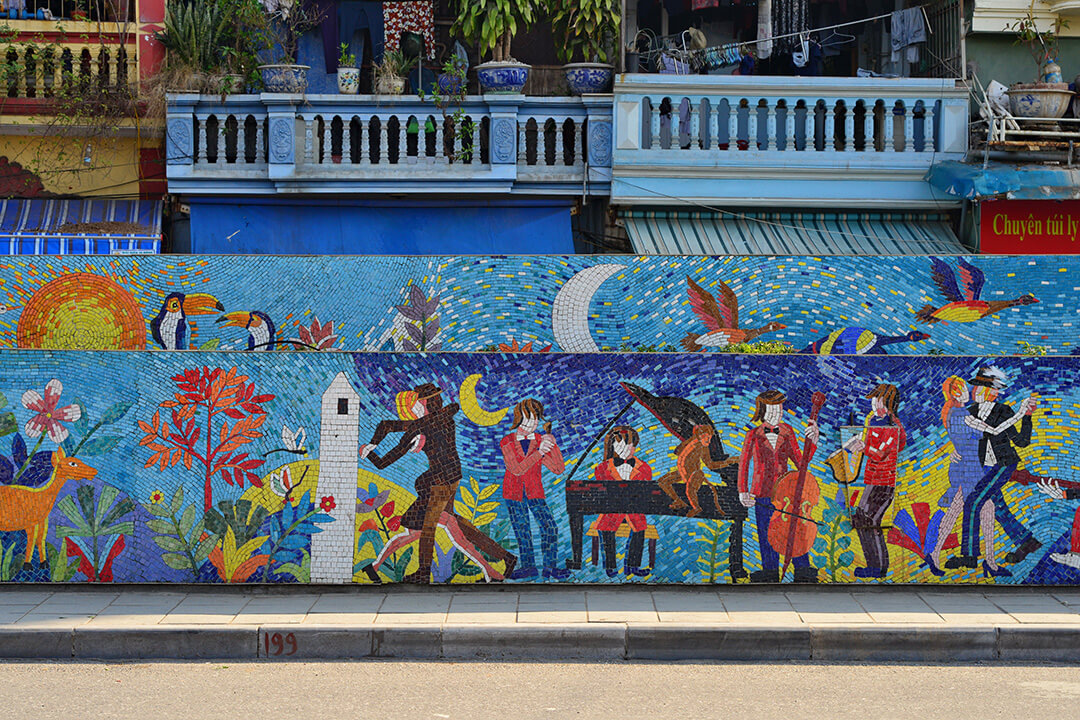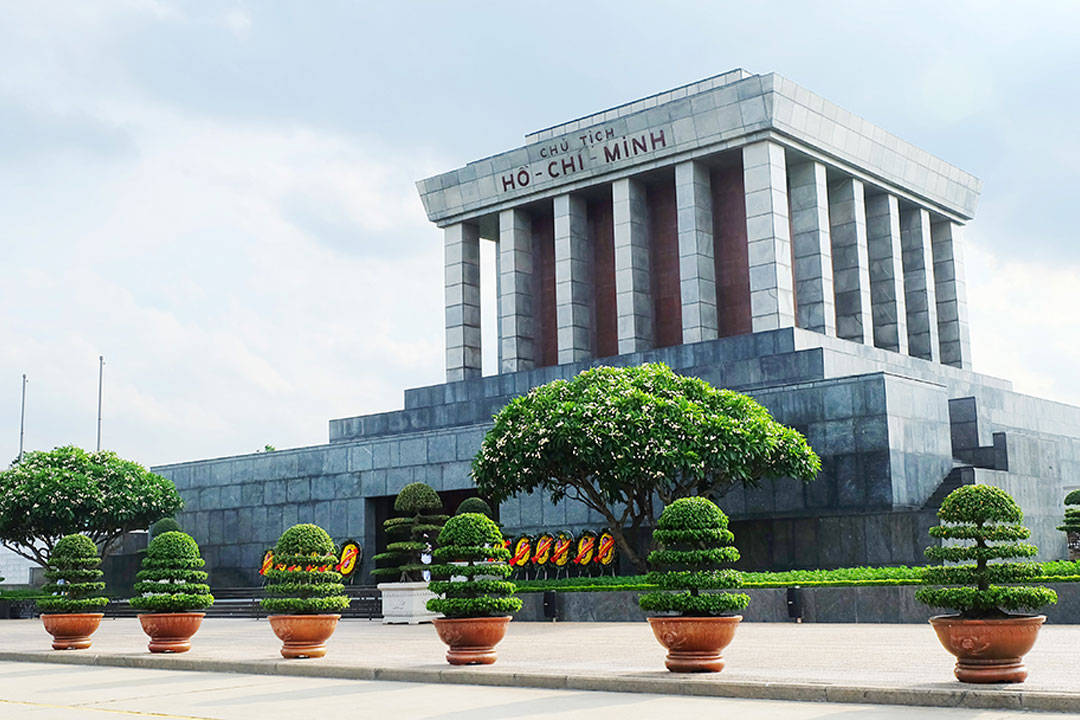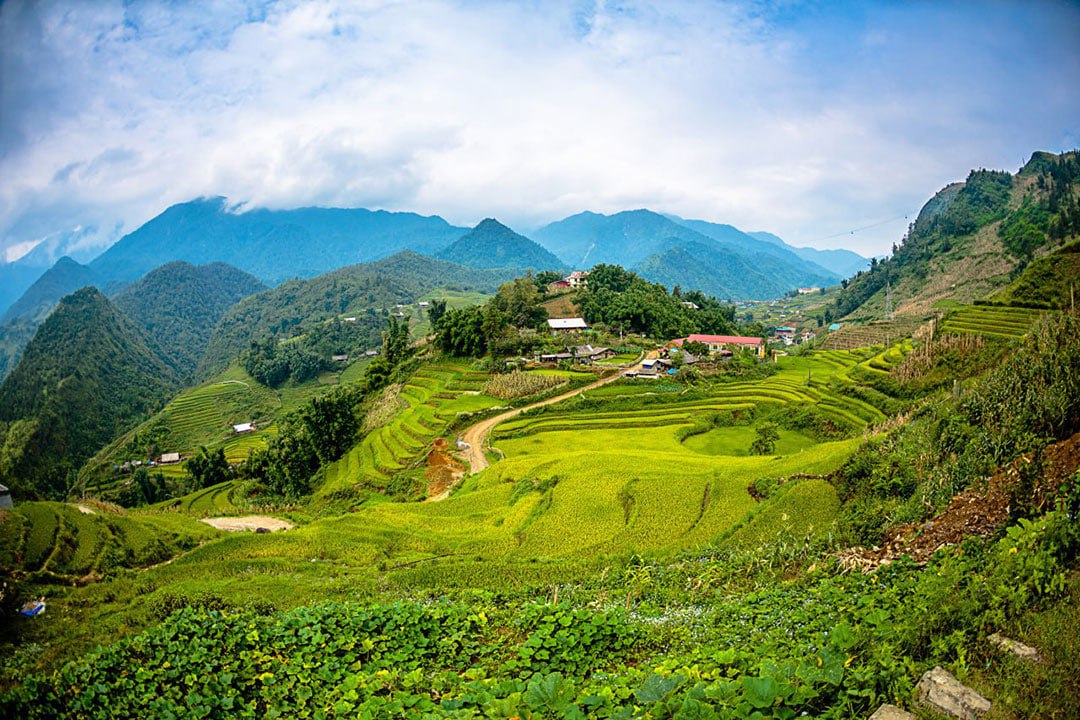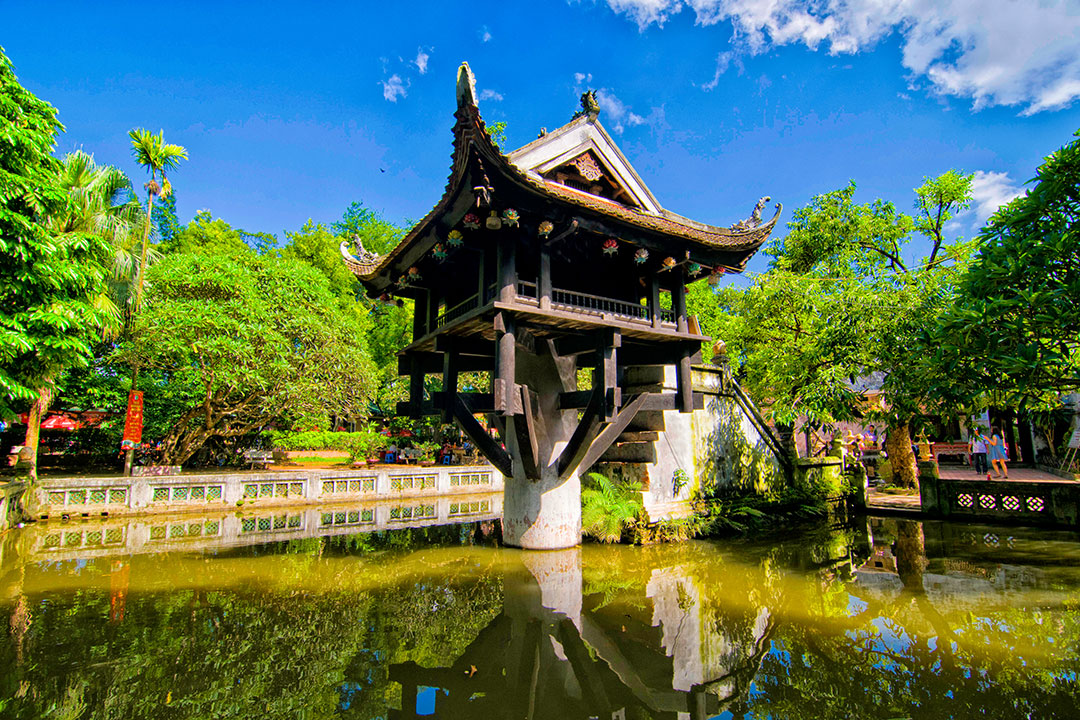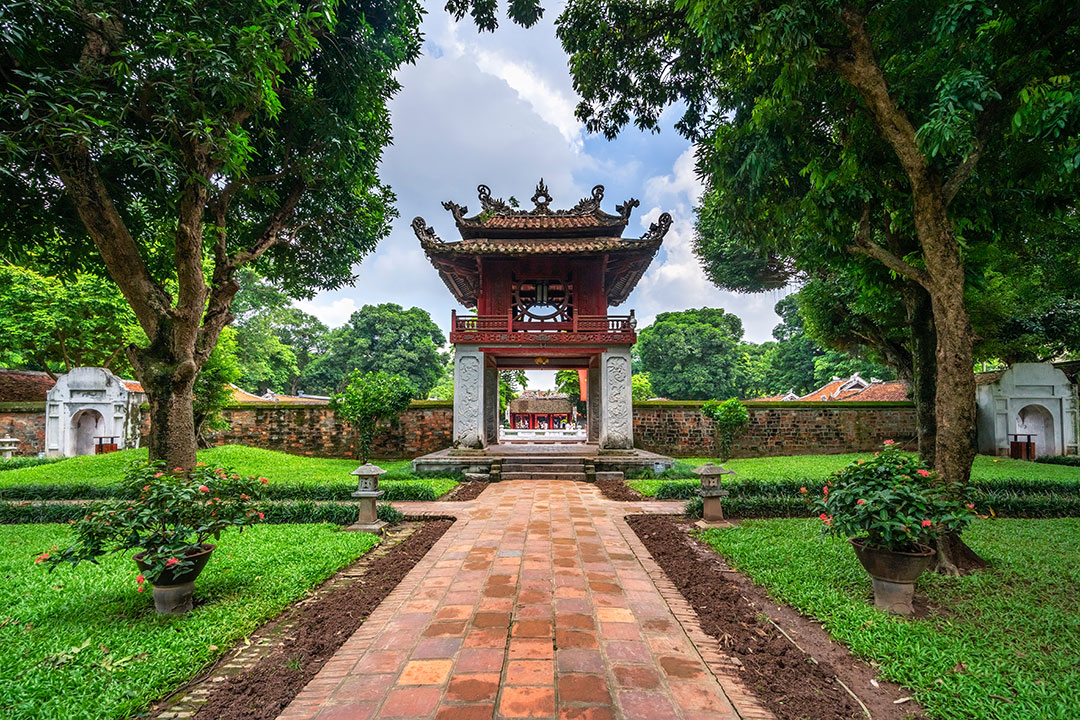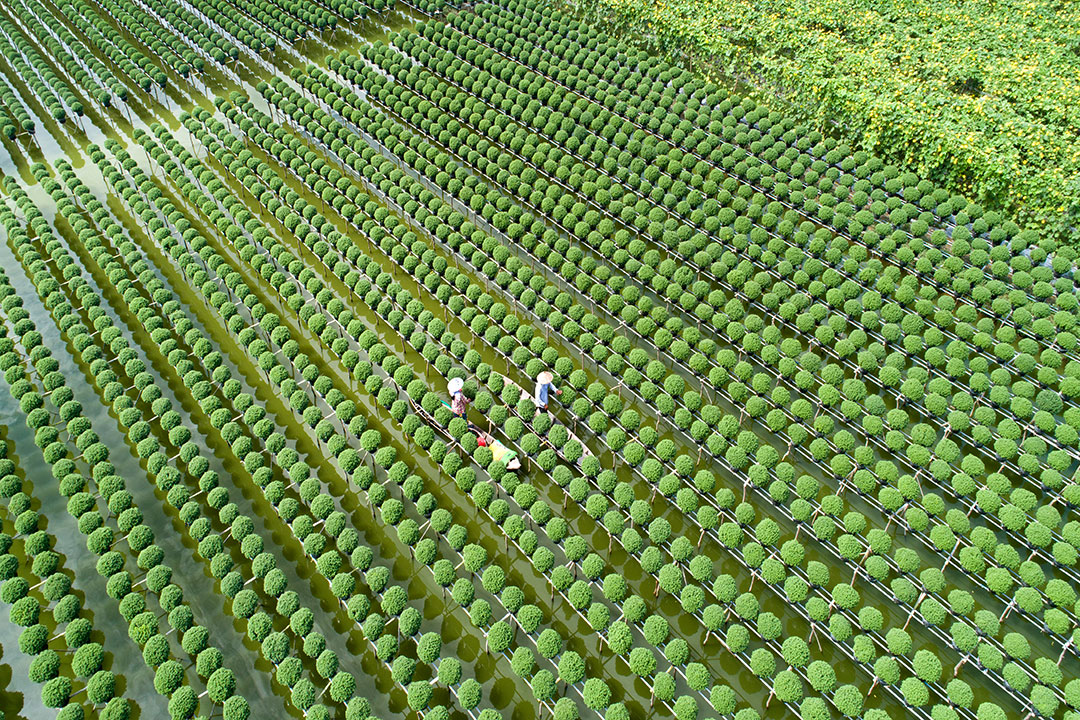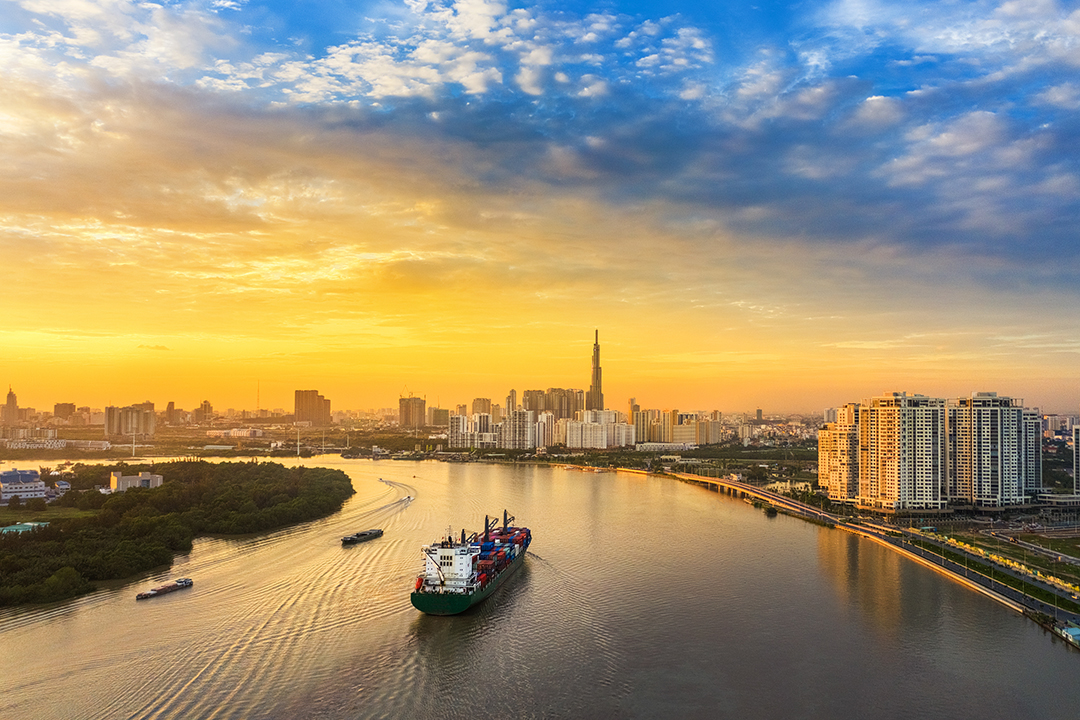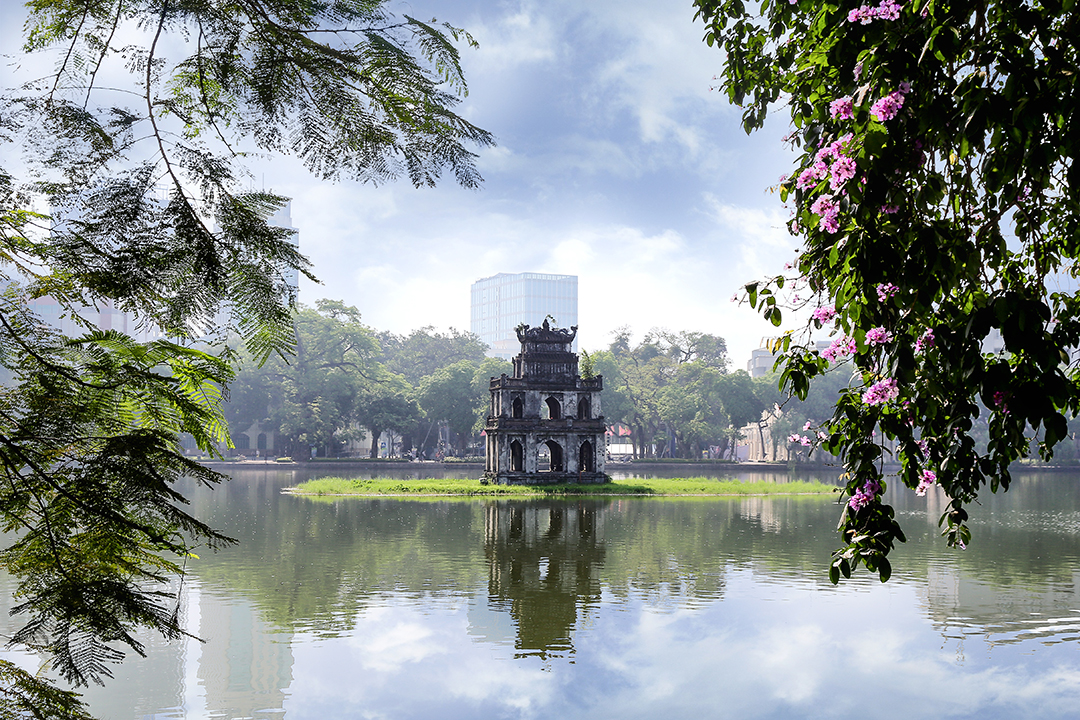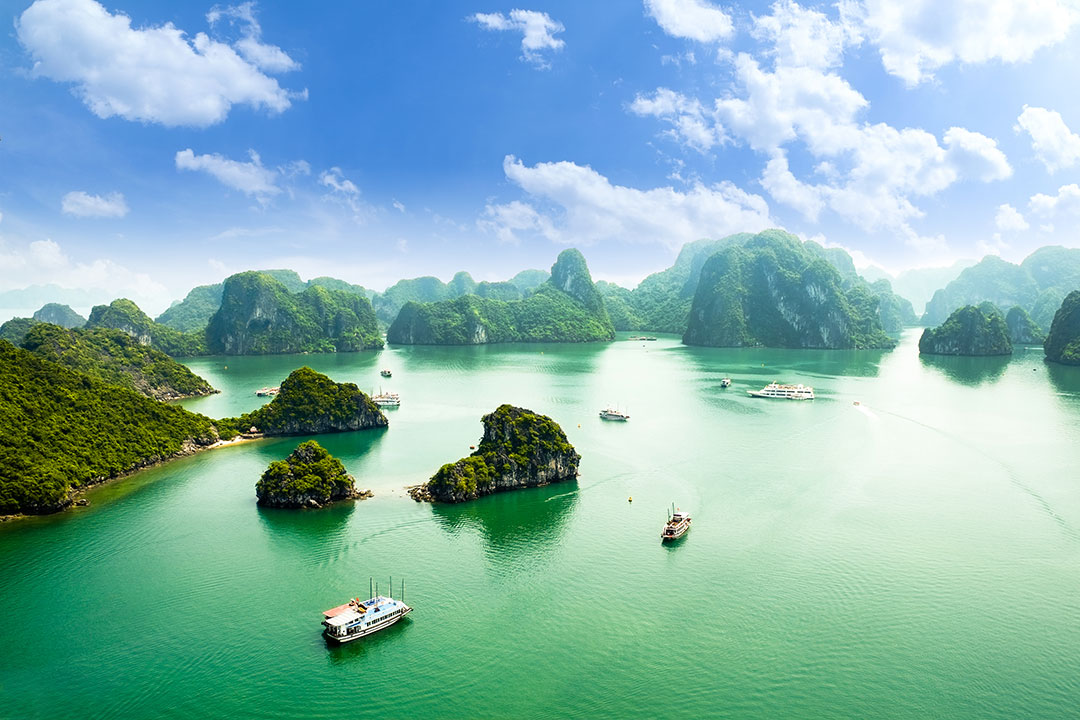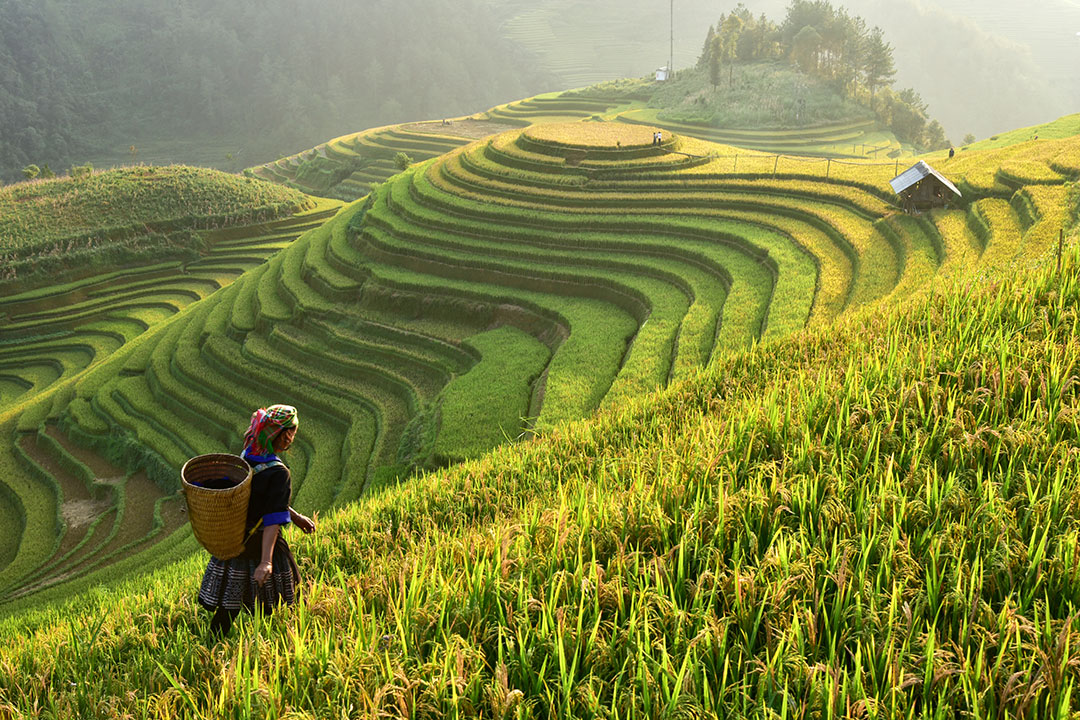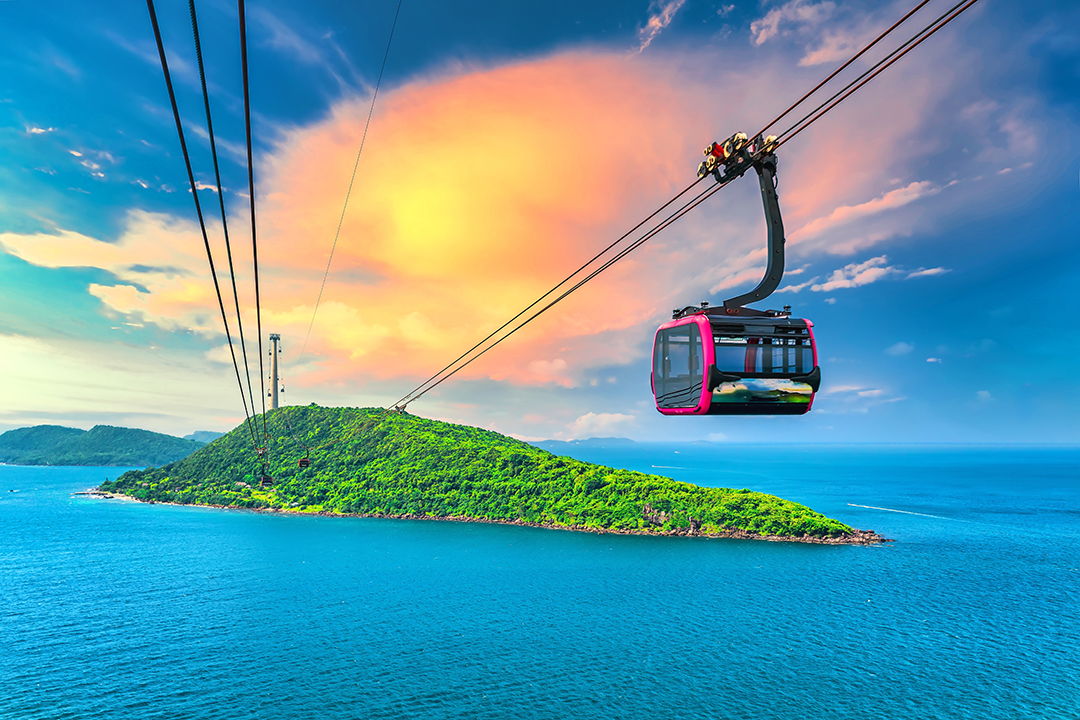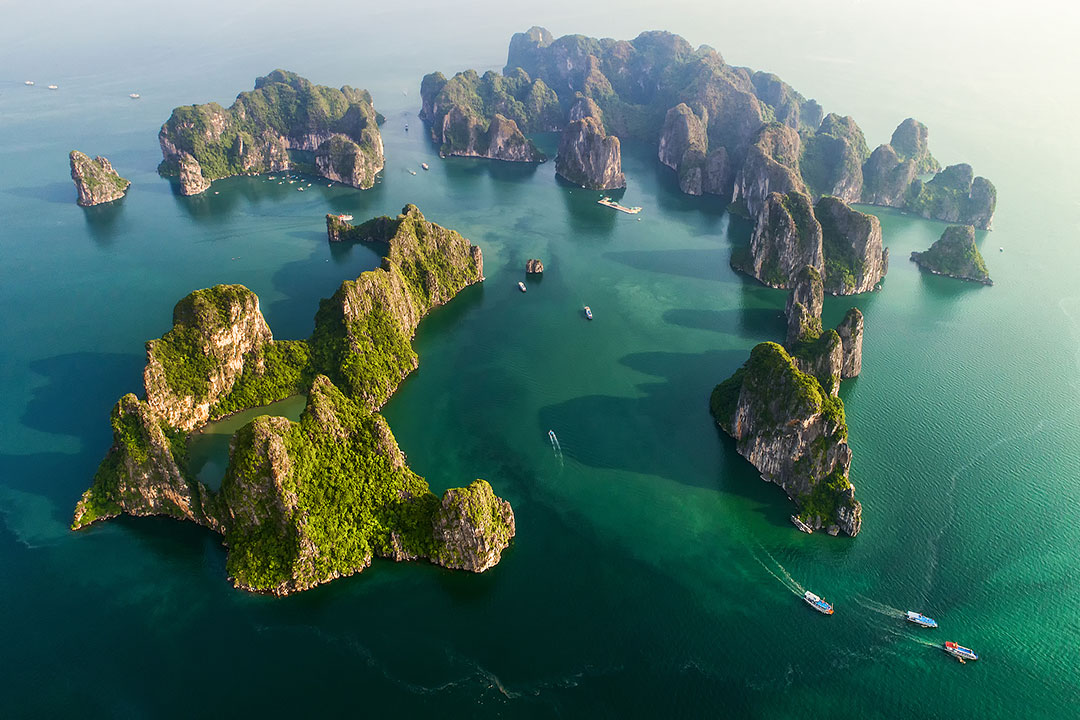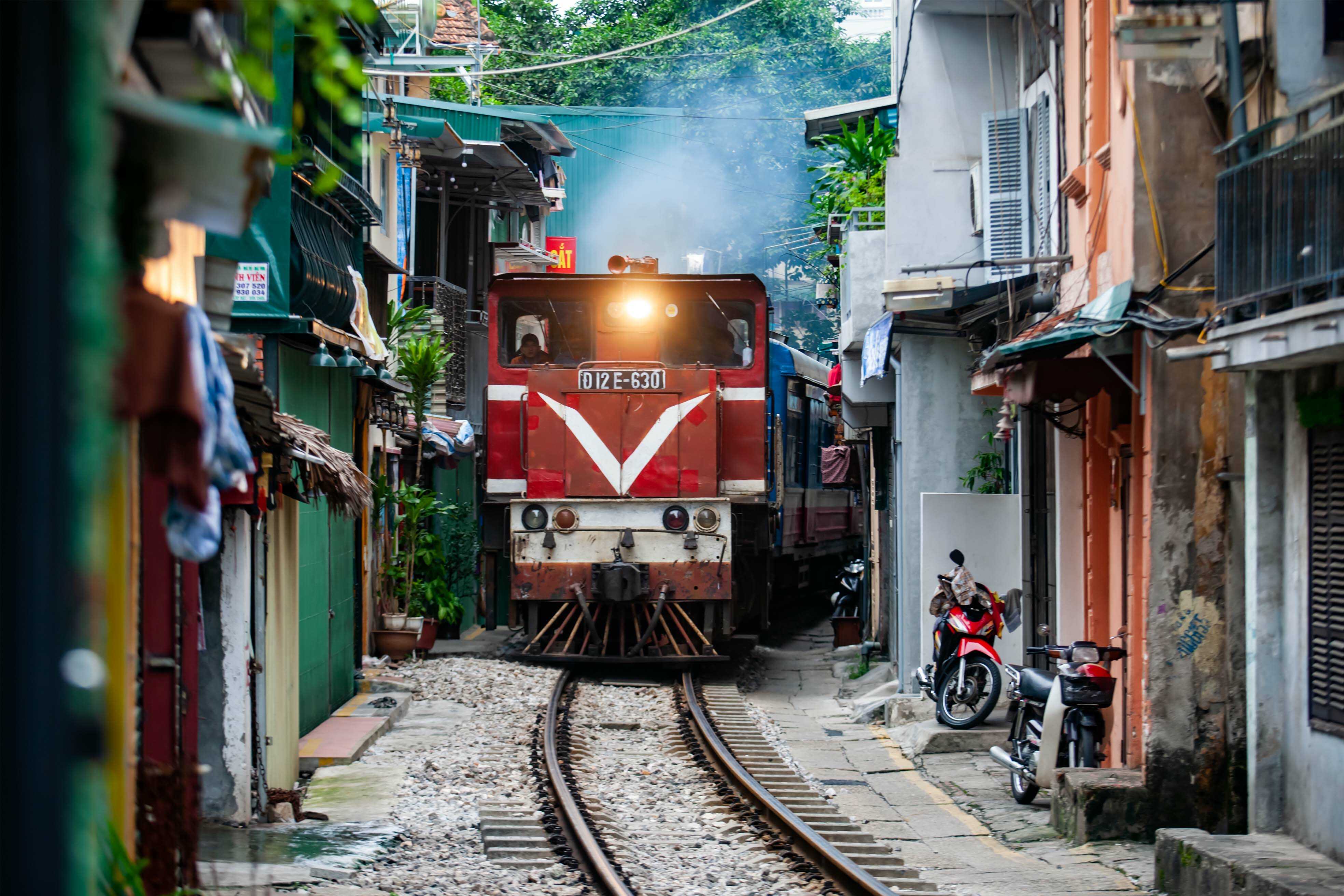Hanoi Ceramic Mosaic Mural: Location, History, Things To Do & Travel Guide
Explore Hanoi’s vibrant art scene with the 3.3-kilometre Ceramic Mosaic Mural along the Red River dike, near Hoan Kiem Lake. Conceived to celebrate Hanoi’s 1,000th anniversary, this Guinness World Record-holding mural blends traditional Vietnamese ceramic art with modern creativity. It features contributions from local artisans, international artists, and even children. Strolling through this vibrant mural offers a glimpse into centuries of Vietnamese culture, making it a must-see for art lovers and curious travelers. In this article, GTrip will provide you with helpful insights and tips to make the most of your visit to this unique cultural landmark.
Introduction to Hanoi Ceramic Mosaic Mural
The Hanoi Ceramic Mosaic Mural is an extraordinary public art installation that transformed ordinary city walls into a vibrant cultural tapestry. Stretching along the Red River dike, this mural blends traditional ceramics with modern art, celebrating Hanoi’s rich heritage.
Where is the Hanoi Ceramic Mosaic Mural Road?
The Hanoi Ceramic Mosaic Mural Road is conveniently located about 1 kilometer from the iconic Hoan Kiem Lake in central Hanoi. Known locally as "Con Duong Gom Su" in Vietnamese, this artistic pathway has become an essential cultural landmark in the capital city. The impressive installation runs along the protective walls of the Red River dike system within Hanoi's historic former Hoan Kiem District.
This magnificent ceramic artwork winds its way through several streets of Hanoi, creating a continuous ribbon of color and creativity. You can trace the mural along Au Co, An Duong Vuong, Yen Phu, Tran Quang Khai, Tran Nhat Duat, and Tran Khanh Du before it concludes at Van Kiep Street. The strategic location along the dike walls transformed what was once a utilitarian structure into an open-air gallery accessible to all.
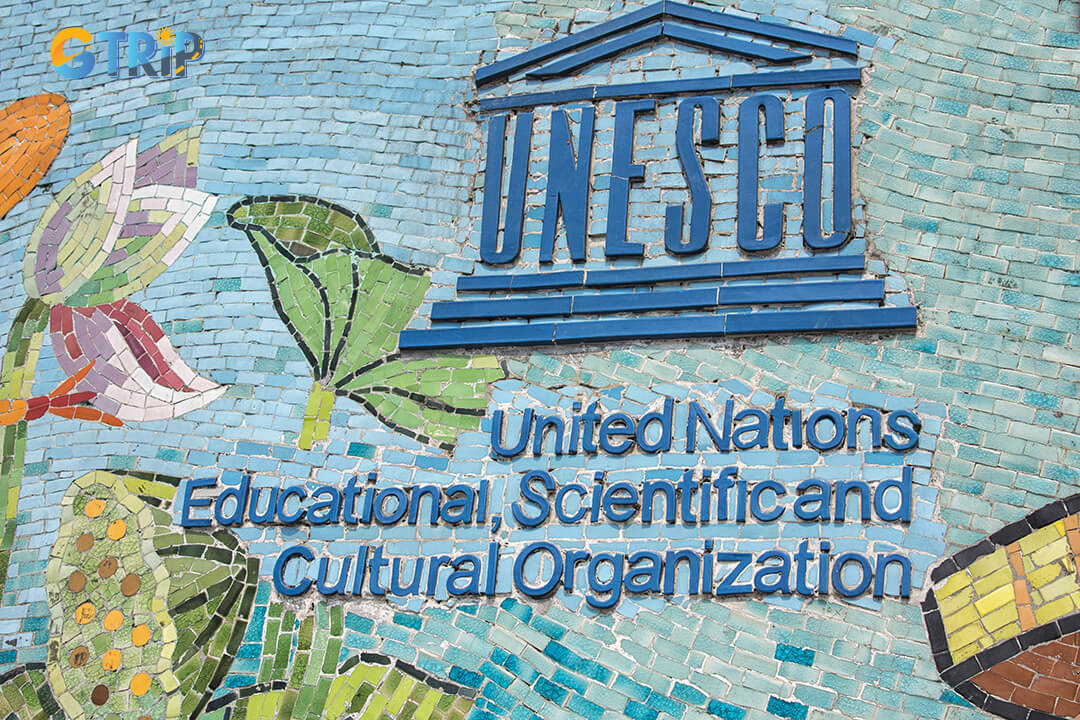
The creative minds behind the Hanoi Ceramic Mosaic Mural Road
The visionary behind this monumental project was Nguyen Thu Thuy, a Vietnamese journalist who conceived the idea to celebrate Hanoi's 1000th anniversary. Thuy's concept became a standout collaboration, uniting 20 Vietnamese and 15 international artists from ten countries. Artists from Denmark, France, the Netherlands, Spain, Italy, Britain, America, Argentina, New Zealand, and Australia contributed their unique perspectives to this cultural mosaic.
Over 100 artisans from traditional ceramic villages crafted the thousands of tiles, lending authenticity to the mural. Community engagement was a cornerstone of the project, with approximately 500 Vietnamese and international children participating alongside students from fine art colleges. The collaborative spirit extended to cultural organizations, with support from the Goethe-Institut, Alliance Française L'espace, British Council, Societa Dante Alighieri Dalte Centre, and cultural centers from Russia and South Korea.
Physical characteristics of the Hanoi Ceramic Road masterpiece
The Hanoi Ceramic Mosaic Mural initially stretched an impressive 3,850 meters, earning it recognition from Guinness World Records as the world's longest ceramic mosaic. Roadwork at the Nghi Tam-Xuan Dieu intersection removed about 600 meters of the mural, reducing its length to around 3,300 meters. The mural varies in height between 0.95 and 1.7 meters, creating an accessible viewing experience for visitors of all ages.
This extraordinary installation covers a substantial area of about 6,950 square meters, showcasing detailed designs across its extensive surface. The artwork features authentic Bat Trang ceramic tesserae, sourced from a neighboring Vietnamese village renowned for its traditional porcelain craftsmanship. Each tiny ceramic tile measures just 3x3 centimeters, with approximately 1,000 individual tesserae comprising each square meter of the mural. This remarkable density reveals the painstaking detail and labor-intensive process behind creating this massive public artwork.
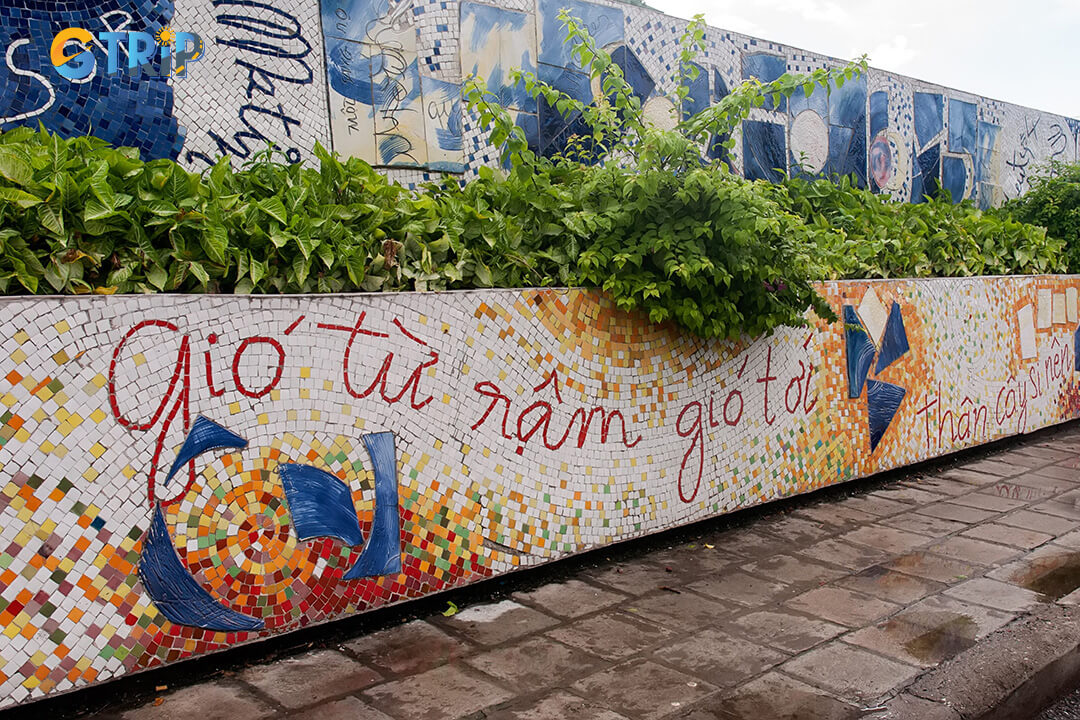
Once the world’s longest ceramic mosaic, the Hanoi Ceramic Mural now spans 3,300 meters and features over 6,900 square meters of detailed Bat Trang ceramics
Cultural significance and artistic value
The Hanoi Ceramic Mosaic Mural Road was created specifically to commemorate the Millennium Anniversary of Hanoi in 2010, marking 1,000 years since the city's founding. It holds the distinction of being Vietnam's first large-scale public collective artwork, pioneering a new approach to community-engaged public art in the country. The project successfully transformed utilitarian urban infrastructure into a cultural attraction while bringing diverse communities together through collaborative artistic expression.
The mural serves as an accessible visual chronicle of Vietnam's rich cultural heritage and historical journey. Designs along the wall feature traditional Vietnamese motifs alongside contemporary interpretations of the country's history, folklore, and natural environment. Beyond its beauty, the project offers mosaic workshops for all ages, providing hands-on experience with traditional ceramic techniques.
The history behind the Hanoi Ceramic Mosaic Mural Road
The Hanoi Ceramic Mosaic Mural represents one of Vietnam's most ambitious public art projects, transforming an ordinary flood defense system into a cultural landmark. This colorful artistic endeavor emerged from a single visionary's dream to beautify urban infrastructure while celebrating Vietnamese heritage and international collaboration.
The birth of an artistic vision
In 2003, Vietnamese artist Nguyen Thu Thuy conceived a revolutionary idea while studying ancient ceramics and bricks from Vietnam's Ly and Tran dynasties at archaeological sites. Inspired by historical artifacts, she envisioned turning Hanoi’s Red River dike into a vibrant ceramic tapestry celebrating Vietnam’s art and creativity. Her concept aimed to create a durable living museum that beautifies and protects against floods.
The project gained official momentum in March 2007 when Thuy presented her ambitious vision at the Hanoi Embellishment Exhibition. City officials and cultural institutions immediately recognized the potential of this innovative urban revitalization concept. Her idea won a prestigious Hanoi architecture prize that year, validating her vision of public infrastructure as cultural art.
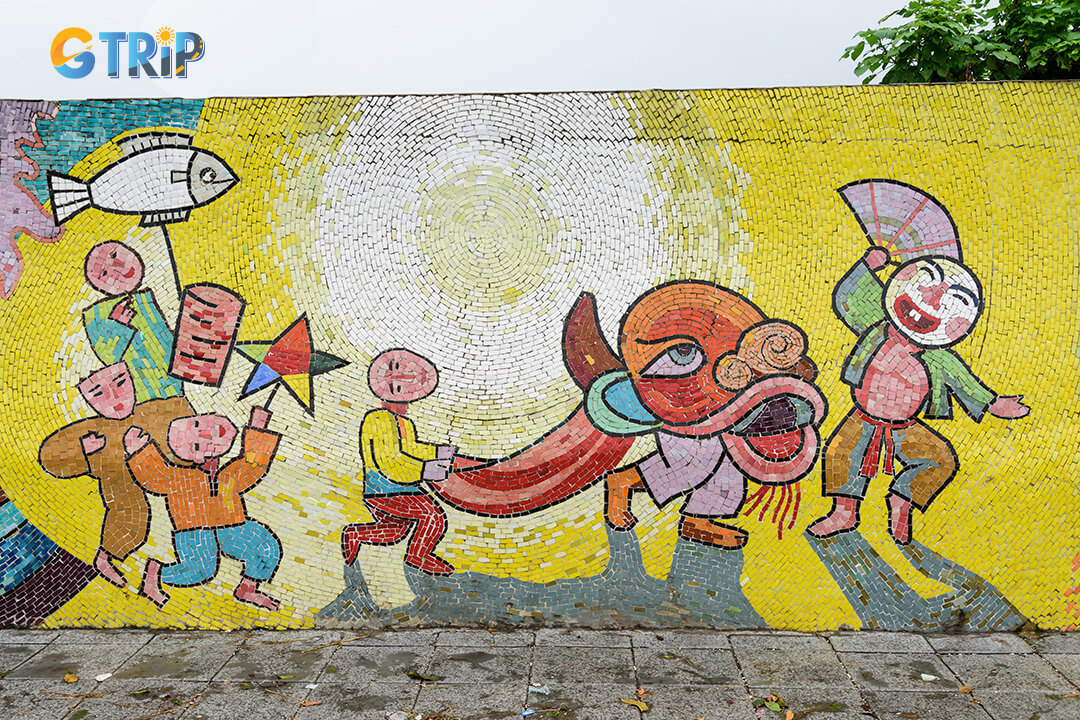
In 2003, artist Nguyen Thu Thuy envisioned transforming Hanoi’s Red River dike into a vibrant ceramic mural
From concept to construction
Construction began in 2007 along the Red River dike system with initial funding from the Ford Foundation. This early phase covered approximately 450 meters of the wall and included comprehensive planning, artist training, and infrastructure preparation. The foundation's support proved crucial in establishing the technical systems and artistic frameworks that would guide the project's expansion.
What makes the mural particularly remarkable is its collaborative nature:
- Vietnamese participation: Over 20 local artists and 100 Vietnamese craftsmen
- International collaboration: 15 foreign artists from countries including France, Denmark, the United States, and Italy
- Community involvement: 500 children contributed designs and helped with installation
- Institutional support: Foreign embassies, the Goethe-Institut, Alliance Francaise, and British Council provided resources and artistic input
Completion and recognition
The project reached a significant milestone on September 25, 2010, when the main construction was completed, perfectly timed to coincide with Hanoi's 1,000th anniversary. This timing was deliberate, positioning the mural as both a gift to the city and a statement about Vietnam's artistic rebirth on the world stage.
Just days later, on October 5, 2010, the Hanoi Ceramic Mosaic Mural achieved global recognition when Guinness World Records officially certified it as the world's longest ceramic mosaic mural. At completion, the artwork stretched approximately 4 kilometers along the Red River dike (with some sources citing up to 6.5 km depending on measurement methods).
Since its completion, the mural has undergone periodic maintenance and expansion efforts to preserve its artistic integrity and extend its reach. Though the initial celebration may have passed, the mural continues to serve as both practical infrastructure and living testament to Vietnam's artistic renaissance in the 21st century.
Things to do at the Hanoi Ceramic Mosaic Mural
The Hanoi Ceramic Mosaic Mural offers visitors a vibrant journey through Vietnam's rich artistic heritage spanning over a millennium. The 3.85km wall presents numerous opportunities for cultural immersion, photography, and relaxation. As you explore this colorful open-air gallery, you'll discover various ways to experience this unique attraction.
Walk along the Hanoi Ceramic Mosaic Mural to explore 21 sections
The 21 distinctive sections of the ceramic mural tell the visual story of Vietnam's evolution through artistic expression. Each segment requires time to fully appreciate the intricate details and symbolic meanings embedded in the mosaic work.
Section A1 immediately captivates visitors with its majestic Ly dynasty dragon motif alongside the powerful inscription "Thang Long - Hanoi 1000 years". This section serves as a chronological art gallery, showcasing artistic elements from the ancient Dong Son civilization through various imperial dynasties. The detailed ceramic work preserves traditional motifs that might otherwise be forgotten in the modern era.
Sections A2 through A21 continue the visual journey, with particularly noteworthy highlights including:
- A2: A fascinating mosaic display representing all 54 Vietnamese ethnic groups through their distinctive architectural and cultural patterns
- A3: Heartwarming collaborative artwork by Vietnamese and international children centered on the theme "Hanoi - the City for Peace"
- A4-A9: Contemporary ceramic expressions by both Vietnamese and international artists, blending traditional techniques with modern artistic vision
- A10-A21: Rich depictions of Vietnamese festivals, daily life scenes, and the nation's progress through significant historical periods
Walking the entire length allows visitors to witness Vietnam's cultural evolution at a leisurely pace, with each section offering new perspectives and artistic surprises. This immersive experience invites reflection on the country’s rich heritage while inspiring appreciation for both tradition and innovation.
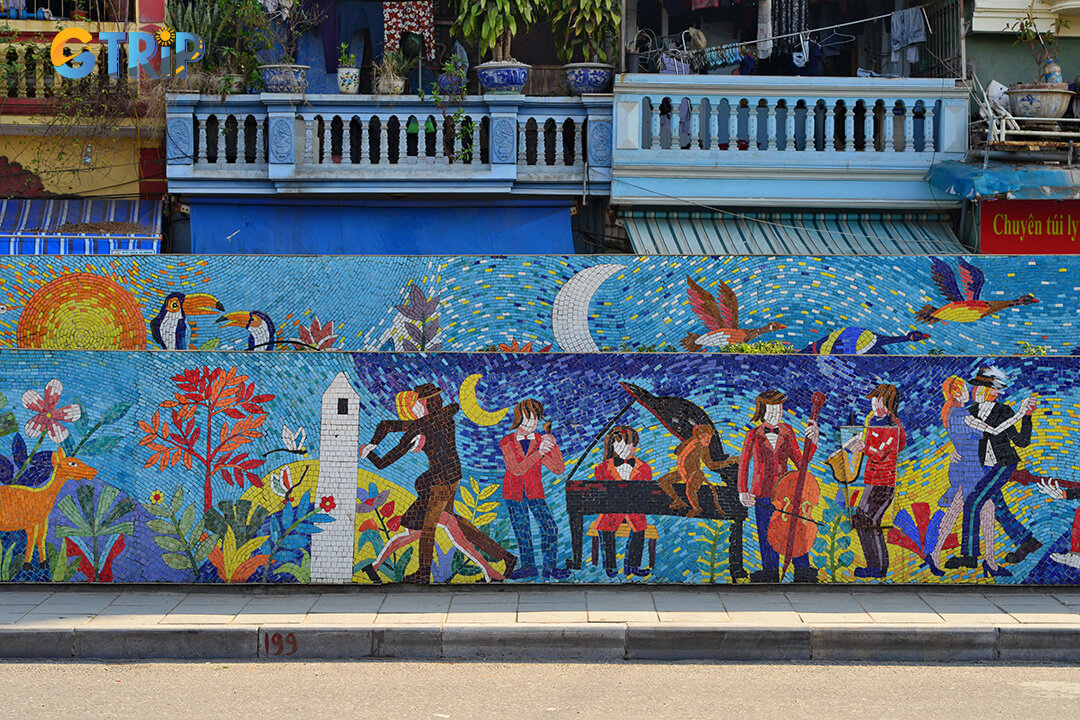
The 21 sections of the Hanoi Ceramic Mosaic Mural vividly portray Vietnam’s cultural journey, blending ancient traditions with modern creativity
Take photos with vibrant ceramic designs
The Ceramic Mosaic Mural presents endless photo opportunities for both casual travelers and serious photographers alike. The kaleidoscope of colors and intricate details creates perfect backdrops for memorable vacation shots. Morning photography sessions benefit from soft, directional light that enhances the ceramic textures and minimizes harsh shadows.
Photography enthusiasts should bring wide-angle lenses to capture the expansive sections while macro capabilities help document the intricate ceramic detailing. Many visitors create thematic photo collections focusing on particular elements like dragons, flowers, or historical figures that appear throughout the installation.
Best times to visit the Ceramic Mural
The best time to visit the Hanoi Ceramic Mosaic Mural is during the cooler parts of the day, such as early morning or late afternoon. These times offer more comfortable temperatures and softer natural light, making it ideal for leisurely walks and photography. Midday visits, especially in the hotter months, can be less pleasant due to strong sun and heat, which may also affect the viewing experience.
Seasonally, the mural is most enjoyable during spring and autumn when the weather is mild and rainfall is minimal. These periods provide pleasant conditions for exploring the nearly 4-kilometer-long artwork without discomfort. Summer can be hot and humid with heavy rains, while winter tends to be cooler and sometimes damp, so planning accordingly will help ensure a more enjoyable visit.
How to get to Hanoi Ceramic Mosaic Mural Road?
Reaching Hanoi's stunning ceramic masterpiece is straightforward with multiple transportation options to suit every traveler's preference and budget. If you prefer public transit, private transport, or exploring on foot, here's everything you need to know about accessing this iconic attraction that stretches along the Red River.
By bus
Hanoi's affordable and extensive bus network provides several convenient routes to the Ceramic Mosaic Mural Road. Each air-conditioned bus features electronic displays announcing upcoming stops, making navigation simple even for first-time visitors. Simply look for stops along Tran Nhat Duat, Tran Quang Khai, or streets adjacent to the mural.
The most budget-friendly option costs between 7,000-9,000 VND (approximately $0.30-$0.40) per journey regardless of distance traveled. Bus 01 connects Gia Lam and Yen Nghia, running parallel to significant portions of the ceramic mural. Bus 02 travels from Bac Co to Yen Nghia, stopping at several points within walking distance of the artwork.
Additional options include Bus 04 (Long Bien-Nhan Chinh), Bus 08A (Long Bien-Dong My), Bus 31 (Bach Khoa-Do Nhuan), and Bus 58 (Yen Phu-Thach Da). Most buses operate from approximately 5:00 AM to 9:00 PM daily, with frequencies of 10-15 minutes during peak hours.
By taxi or ride-hailing
For maximum convenience, especially when traveling in groups or with luggage, taxis and ride-hailing services offer door-to-door transportation directly to the mural. Popular ride-hailing apps like Grab, Be, and Xanh SM operate extensively throughout Hanoi alongside traditional taxi companies such as Mai Linh and G7.
Fares vary based on distance and traffic conditions, typically ranging from 30,000 VND to 150,000 VND (approximately $1.30 to $6.50) from most central Hanoi locations. Most drivers speak basic English, but having your destination written in Vietnamese can help avoid confusion. When specifying your destination, mention a landmark near your preferred section of the mural for easier drop-off.
During rush hours (7:30-9:00 AM and 5:00-7:00 PM), journey times may increase significantly due to Hanoi's notorious traffic congestion. Scheduling extra travel time during these periods is advisable.
By motorbike or bicycle
Exploring Hanoi via two wheels offers flexibility and an authentic local experience when visiting the Ceramic Mosaic Mural. Numerous rental shops in the Old Quarter provide daily motorbike rentals for 80,000-150,000 VND ($3.50-$6.50) and bicycles for 40,000-80,000 VND ($1.70-$3.50).
Most rentals require a passport or a deposit. Check the vehicle carefully and photograph any damage before taking it. Limited parking is available near the mural, but informal parking attendants often charge around 5,000-10,000 VND to watch your vehicle.
Navigating Hanoi's chaotic traffic requires confidence and caution, especially for newcomers. Helmets are legally required for motorbike riders, and proper insurance coverage is strongly recommended. The mural's location along the river dike system means minimal elevation changes, making it suitable for casual cyclists.
By walking
Walking to the Ceramic Mosaic Mural offers the most immersive experience, particularly for visitors staying in Hanoi's Old Quarter or near Hoan Kiem Lake. Most central accommodations lie within 1-2 kilometers of some section of the mural, making it accessible on foot in 15-30 minutes.
The pedestrian path along the mural provides excellent opportunities to appreciate the intricate ceramic details and snap photos without traffic concerns. Walking also allows you to discover charming cafes, street food vendors, and local life along the route. Early mornings (before 8:00 AM) offer the most pleasant walking conditions with cooler temperatures and fewer crowds.
Consider that the entire mural stretches approximately 4 kilometers, so walking its full length requires good physical condition and ample time. Wear comfortable shoes, apply sunscreen, and carry water, especially during summer months when temperatures regularly exceed 35°C (95°F). Portions of the mural are wheelchair accessible, though the extensive length and occasional uneven surfaces may present challenges.
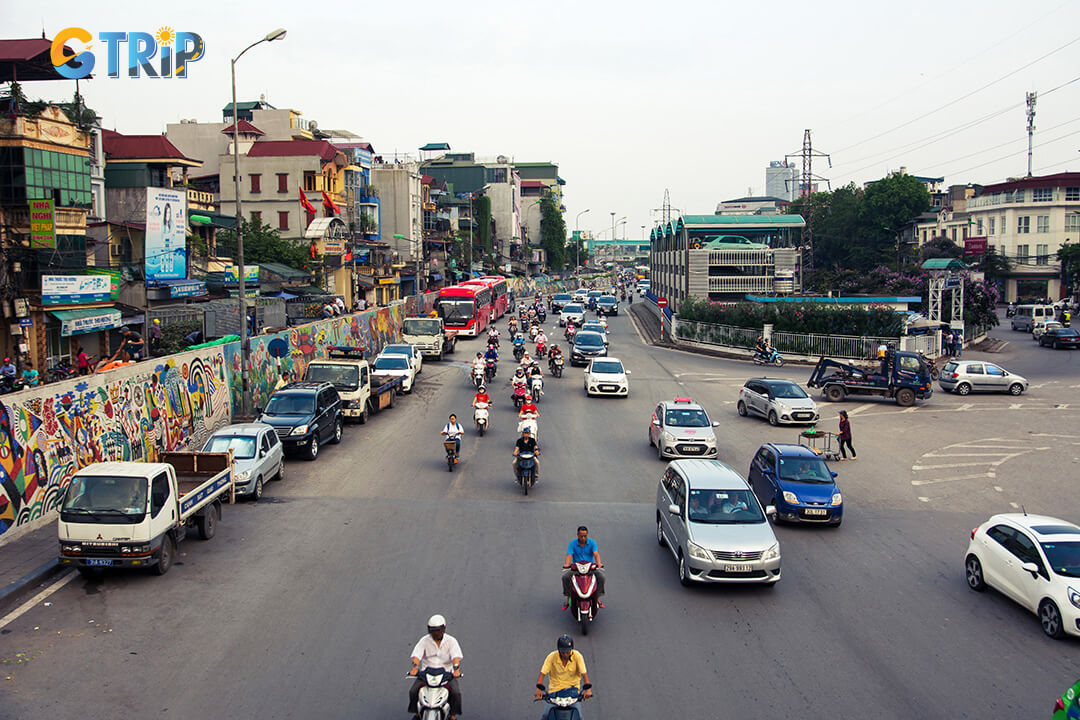
Getting to Hanoi’s iconic Ceramic Mosaic Mural is easy, with public transit, private transport, and walkable access along the scenic Red River dike
Nearby attractions from Hanoi Ceramic Mosaic Mural
After exploring the vibrant ceramic artistry along Hanoi's famous mural road, venture into the surrounding area where cultural gems await within easy walking distance. The nearby attractions offer a perfect complement to your mural experience, showcasing Hanoi's blend of traditional heritage, scenic beauty, and bustling commerce.
Aqua Art
Just a short 3-minute stroll from the Ceramic Mosaic Mural lies Aqua Art, a contemporary gallery space that continues your artistic journey through Vietnam. This hidden gem features rotating exhibits by both veteran and emerging Vietnamese artists, including ceramics, paintings, and mixed media.
The gallery occupies a beautifully renovated French colonial building, creating a striking contrast between traditional architecture and modern artistic expression. You appreciate the quiet, contemplative atmosphere, a pleasant change from the bustling streets nearby. The knowledgeable staff provides excellent context for the exhibits, and many pieces are available for purchase as unique souvenirs of your time in Hanoi.
Visitor information:
- Opening hours: 9 AM to 6 PM, Tuesday through Sunday
- Admission fee: Free entry (purchases optional)
- Photography: Permitted without flash
- Guided tours: Available by appointment
- Languages: English and Vietnamese
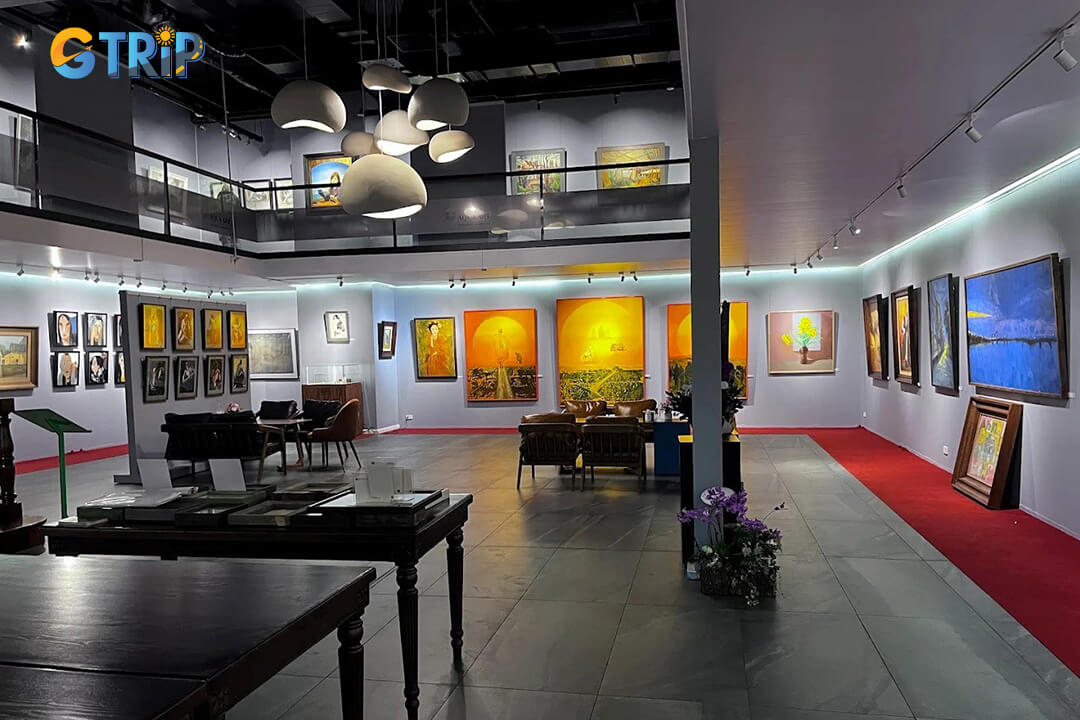
Aqua Art Gallery offers a peaceful space to explore contemporary Vietnamese art in a beautifully restored colonial building
Long Bien Market
Less than a kilometer away, Long Bien Market offers an authentic glimpse into everyday Hanoi life. This sprawling wholesale market comes alive in the pre-dawn hours when trucks and motorbikes loaded with fresh produce arrive from surrounding provinces. By day, it transforms into a bustling retail hub where locals shop for daily essentials.
Unlike the more tourist-oriented Dong Xuan Market, Long Bien retains its authentic character with minimal souvenir stalls. Instead, you'll find mountains of tropical fruits, vegetables, flowers, and seafood. Located near the historic Long Bien Bridge, the market gains added significance. The French-built bridge survived wartime bombings and remains a key transport link.
For photography enthusiasts and cultural explorers, visiting between 3-5 AM provides the most dynamic experience as vendors negotiate wholesale prices amid the chaotic energy of deliveries. During daylight hours, the market becomes more navigable for casual browsing.
| Best times to visit | Experience | Crowd level | Photo opportunities |
|---|---|---|---|
| 3 AM-5 AM | Wholesale trading, authentic atmosphere | Low tourist, high local activity | Excellent (bring proper camera settings for low light) |
| 6 AM-9 AM | Morning shopping rush, breakfast vendors | Medium | Good |
| 10 AM-4 PM | Relaxed browsing, easier navigation | Low | Moderate |
Ngu Xa Temple
Ngu Xa Temple, also know as Than Quang Pagoda, this temple represents a spiritual cornerstone of local life away from standard tourist itineraries. The temple honors several deities and serves as both a religious site and a community gathering place.
The architecture showcases traditional Vietnamese temple design with ornate wooden carvings, ceramic roof decorations, and stone sculptures. Its peaceful courtyard provides welcome respite from Hanoi's frenetic energy. What makes this temple special is the nearby families who still practice traditional bronze-making, with small workshops visible around the area.
When visiting, observe proper temple etiquette:
- Dress modestly (shoulders and knees covered)
- Remove shoes before entering the main sanctuary
- Speak quietly and avoid flash photography inside
- Small donations are appreciated but not required
- Visit in the morning for the most serene experience
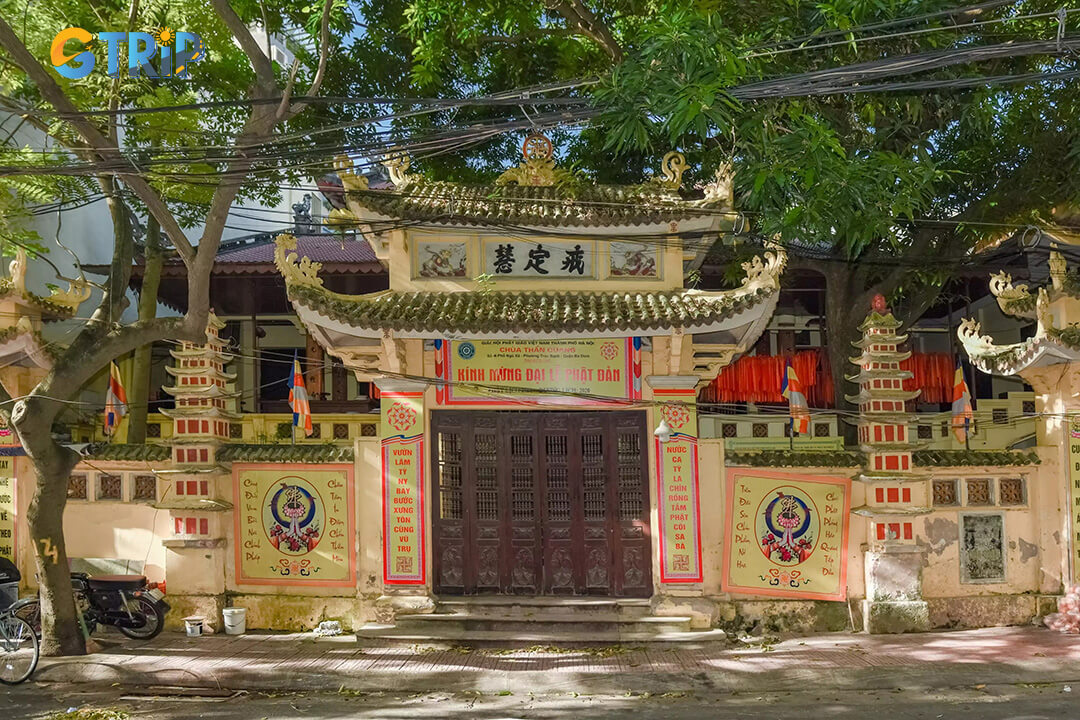
Ngu Xa Temple, also known as Than Quang Pagoda, offers a quiet spiritual retreat and a glimpse into Hanoi’s living bronze-making tradition
Truc Bach Lake
Truc Bach Lake offers scenic beauty and historical significance just one kilometer from the Ceramic Mural. This smaller body of water, separated from West Lake by a narrow causeway, provides a peaceful setting for relaxation and reflection after your cultural explorations.
The lake gained historical notoriety as the location where U.S. Senator John McCain was shot down and captured during the Vietnam War. Today, a small monument marks this event. The lake has transformed into a leisure destination surrounded by cafes and restaurants where you can sample local specialties like pho cuon (fresh rice noodle rolls) and ca phe trung (egg coffee).
The lake perimeter offers excellent walking paths with views across the water to Tran Quoc Pagoda on West Lake. Local fishermen still cast their lines here, creating picturesque scenes against the urban backdrop. The area comes alive in the early evening as residents gather for exercise, socializing, and sunset views.
Lake activities:
- Stroll the 2 km circumference path (approximately 30 minutes)
- Rent a swan-shaped paddle boat for lake views
- Sample street food from the lakeside vendors
- Visit the lakefront cafes for Vietnamese coffee
- Capture sunset photographs with Hanoi's skyline
Local cuisine and street food along the Hanoi Ceramic Road
Walking the expansive Hanoi Ceramic Mosaic Mural isn't just a visual feast but a culinary adventure waiting to unfold. The 3.85-kilometer stretch offers numerous opportunities to sample Vietnam's renowned street food scene while admiring the artistic masterpiece. Traditional food vendors line sections of the walking route, creating an authentic atmosphere that engages all your senses simultaneously.
The Hoan Kiem District, which borders parts of the Ceramic Road, boasts an impressive array of cafes and restaurants perfect for refreshment breaks. You can step away from the mural periodically to rest in charming Vietnamese coffee shops serving rich, aromatic ca phe sua da (iced coffee with condensed milk). These establishments provide welcome respite during hot summer days when exploring the full length of the mural becomes challenging.
Food stalls clustered at strategic points along the ceramic wall showcase Vietnam's most beloved dishes. Here you'll find steaming bowls of pho with fragrant herbs and tender beef slices beckoning hungry travelers. Crispy banh mi sandwiches stuffed with savory fillings offer a portable option for those wanting to continue their mural exploration while eating.
Popular street foods along the ceramic road:
- Pho bo with fragrant broth and fresh herbs
- Bun cha with grilled pork, rice noodles and magical dipping sauce
- Banh mi
- Crispy spring rolls filled with minced pork and vegetables
- Sweet dessert soups with various textures and ingredients
Many food vendors set up shop in the late afternoon, creating a lively atmosphere as locals and tourists gather for evening meals. The ceramic wall takes on a different character when complemented by the sizzling sounds and enticing aromas of Vietnamese cooking. Small plastic stools and tables appear along certain sections, inviting visitors to dine casually while admiring the artistic details.
Combining cultural sightseeing with culinary exploration creates a more comprehensive Vietnamese experience. The continuous flow between admiring intricate ceramic art and sampling delicious local specialties represents the perfect harmony of Vietnam's cultural and culinary heritage. Many visitors find that alternating between viewing sections of the mural and enjoying food breaks allows for a more relaxed and memorable exploration.
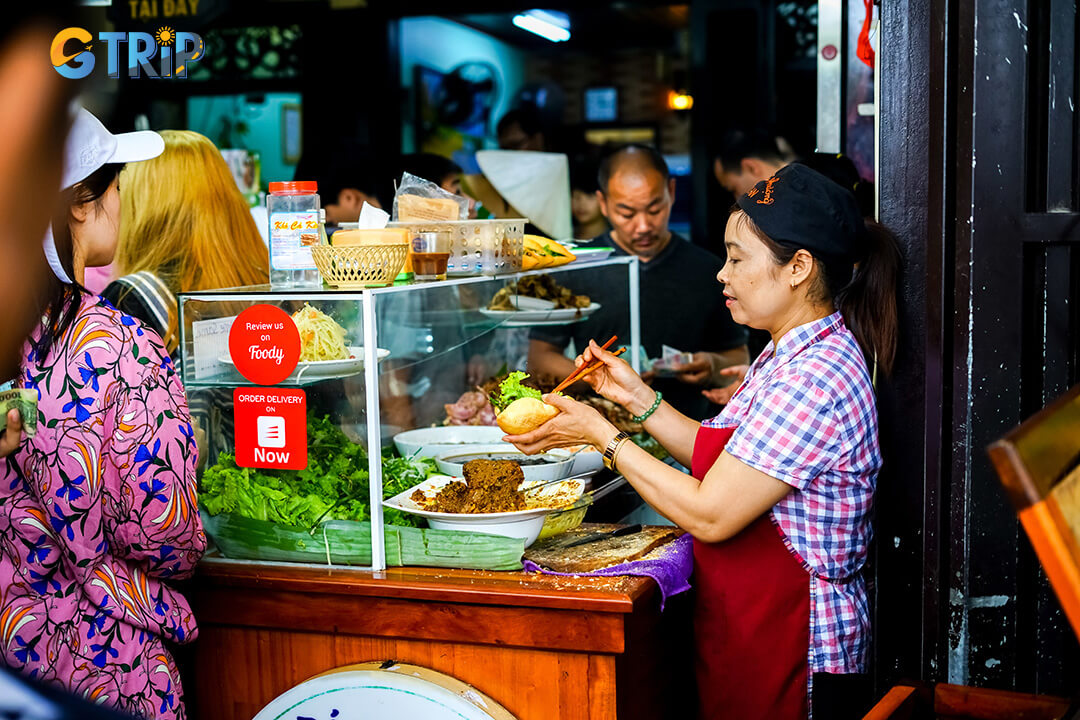
In Hanoi, banh mi is the favourite street food, so you can easily buy banh mi at the corner of the street if you're hungry
Essential safety tips for visitors
Exploring the vibrant Hanoi Ceramic Mosaic Mural is an incredible cultural experience, but like any popular tourist attraction, it requires some safety awareness. The mural stretches along the Red River dyke road, exposing visitors to both traffic and weather conditions. Here are crucial safety tips to ensure your visit remains enjoyable and trouble-free:
- Be cautious of traffic when crossing streets to view different sections: The mural runs alongside busy roads where motorbikes and vehicles rarely stop for pedestrians, so always look both ways and cross slowly with awareness of Hanoi's unique traffic flow patterns.
- Stay hydrated, especially during summer months: Hanoi's summer temperatures can soar above 35°C (95°F) with high humidity, making dehydration a serious risk while walking the 3.85 km stretch of artistic displays.
- Keep valuables secure as it is a public area: While generally safe, the popular tourist nature of the ceramic mural attracts occasional pickpockets, so wear cross-body bags, keep phones secure when taking photos, and remain vigilant in crowded sections.
- Use sun protection, as many sections have limited shade: The open design of the mural road offers minimal cover from direct sunlight, making sunscreen, hats, and lightweight clothing essential to prevent sunburn during daytime exploration.
- Wear comfortable walking shoes for the uneven surfaces: Parts of the walkway can be uneven or slightly damaged, requiring sturdy footwear to navigate safely while admiring the intricate ceramic details.
- Visit with a companion, especially during early morning or evening hours: Though generally safe, having a travel partner enhances security during quieter times when fewer tourists are present.
- Respect the artwork by not climbing or touching delicate sections: The ceramic tiles may have sharp edges or loose pieces in some areas, and proper appreciation from a respectful distance ensures both your safety and preservation of this remarkable cultural treasure.
- Be aware of weather forecasts before planning your visit: Sudden rainstorms, particularly during monsoon season (May to September), can create slippery conditions along the ceramic wall path.
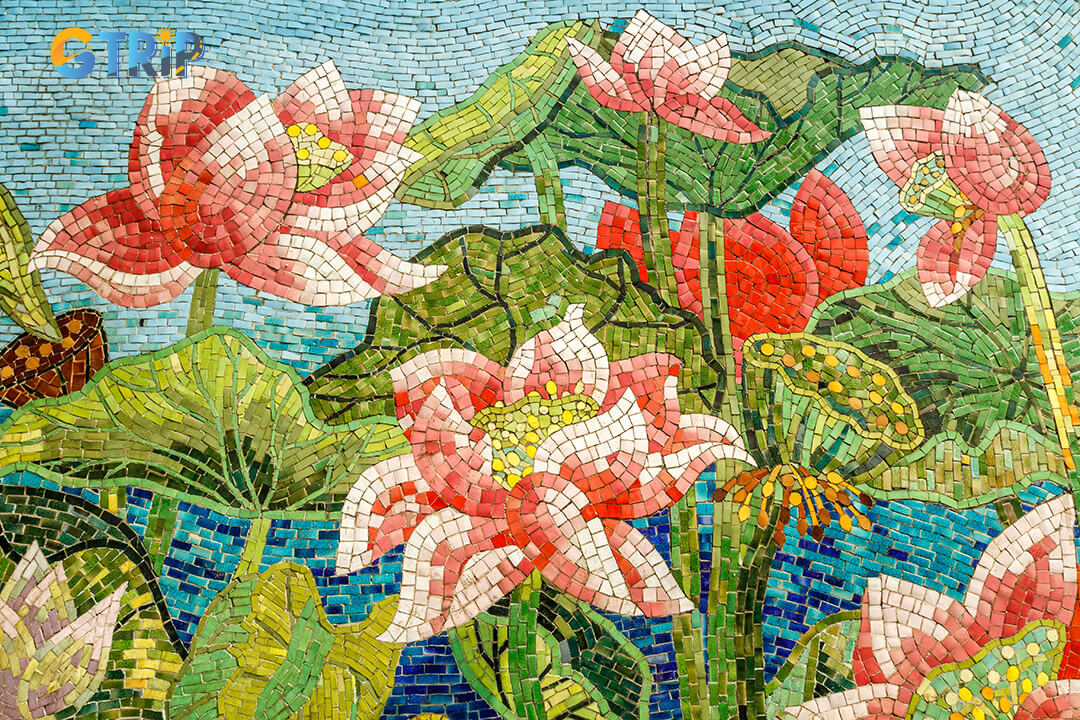
Stay safe at the Hanoi Ceramic Mosaic Mural by watching traffic, staying hydrated, using sun protection, securing valuables, wearing good shoes, and respecting the artwork
As you stroll along Hanoi's vibrant walking streets, the enchanting allure of the Hanoi Ceramic Mosaic Mural captures not just your gaze but your imagination. This stunning attraction offers more than just a visual feast; it invites reflection on history, culture, and artistry, all intertwined in its vivid tiles. Your exploration is not merely a visit but rather an intimate embrace of local spirit and creativity that inspires wanderlust beyond the tiles themselves.
With GTrip as your guide, this experience stands out as a reminder of how travel enriches our lives through unique stories etched into cityscapes. As you ponder future adventures or revisit memories captured here, remember that new possibilities always await discovery. Seeking more hidden gems or the next artistic marvel around the globe, your journey continues with inspiration ignited right here at Hanoi’s exquisite mosaic masterpiece.

